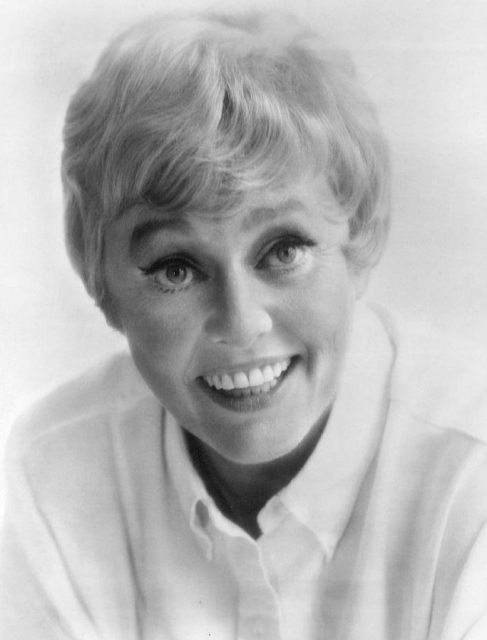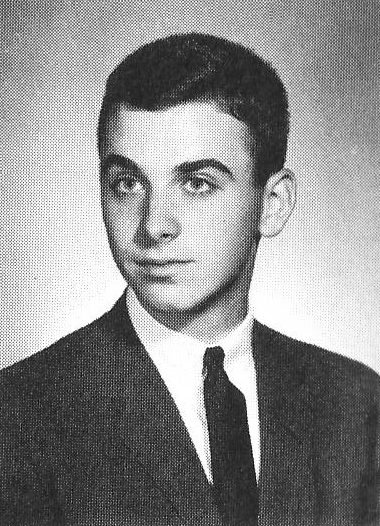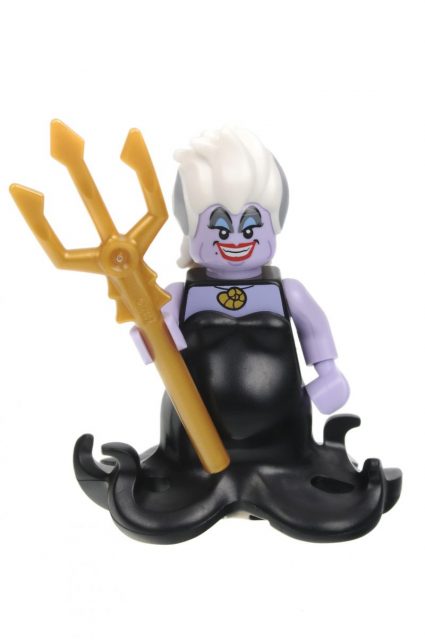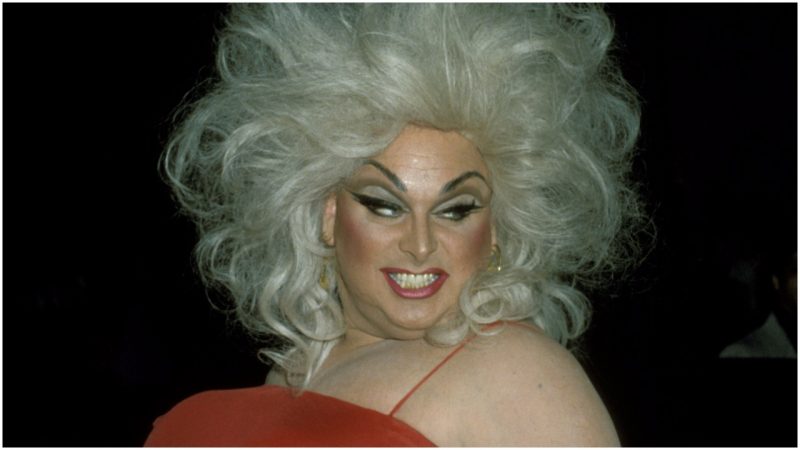Overarched eyebrows obviously drawn on with a thick black pencil. Garish blue eyeshadow. Show-stopping red lips set off by a mole. Gravity-defying upswept white hair. An enormous chin atop a massive body in an unflattering, tight-fitting dress. Who is this? An evil animated villainess, or a man mockingly impersonating a garish woman? The correct answer, of course, is both.
Ursula is the gravely-voiced sea witch in The Little Mermaid, played by Pat Carroll (early choice Bea Arthur turned down the role). She tricks Ariel into trading her voice for a pair of legs, but her ultimate goal is to topple Ariel’s father, King Triton, to rule over the underwater kingdom of Atlantica.
While Disney executives at the time probably didn’t quite make the connection, Ursula was based on a cross-dressing star of campy (and raunchy) indie films. It wasn’t unusual for animators to use the bodies and mannerisms of famous actors for their character sketches.
The heroine Ariel, for instance, had the same cascading red hair as then-teenage star Alyssa Milano. It was a bit subversive, however, to base a character in a family-friendly G-rated film on such a profane model, even if that character was meant to personify evil.

Glenn Milstead was the real name of the actor who inspired Ursula, though when he stuffed his large frame into a red dress and painted on his outlandish face, he called himself Divine. This character was angry, vain, and funny, outrageously offensive in a way that was meant to signal satire (though many did and still do find his portrayals offensive).
A shy and overweight child, Milstead was bullied in school for his love of dolls and makeup. Possibly in reaction to early humiliation, he developed a protective shell of profanity and humor. Nothing was too shocking, he delighted in pushing limits. This appealed to his Baltimore neighbor John Waters, who cast Milstead in his transgressive and trashy films for more than 20 years, including the midnight-art-theater classic Pink Flamingoes.

The Little Mermaid, Disney’s interpretation of the classic Hans Christian Anderson story, was its first animated fairy tale in 30 years. As it happens, Howard Ashman, the lyricist brought in to write songs for the movie, was also from Baltimore.
While he wasn’t an animator himself, Ashman weighed in on early drawings of the characters and delighted in Rob Minkoff’s sketches of Ursula as an overweight, vampy matron. “Ursula was modeled on the drag queen Divine,” Ruben Acquino, another animator on set said in the book From Mouse to Mermaid: The Politics of Film, Gender, and Culture. The character was meant to be an ironic instructor on femininity.

The Little Mermaid was a commercial and critical success and was credited with launching Disney’s animation Renaissance. It was the last Disney film to use old-fashioned hand-drawn cel animation (while also incorporating an early version of Pixar animation). Released in 1989, The Little Mermaid became the first animated film to gross more than $100 million. It won the 1990 Academy Award for Best Original Music Score.
Though he would have been thrilled with the character of Ursula, Glenn Milstead never saw the film. He died in 1998 at age 42, one month after the release of his last work with John Waters, Hairspray, which was the pair’s most mainstream film and for them a critical and commercial success. In it, he had two roles: a tawdry mother and a male television-station owner. To Milstead, this was just what a person did in theater. Harkening back to Shakespearean days, when men played women’s roles, Milstead insisted in a 1976 interview, “I’m not a female impersonator. I’m an actor.’”
